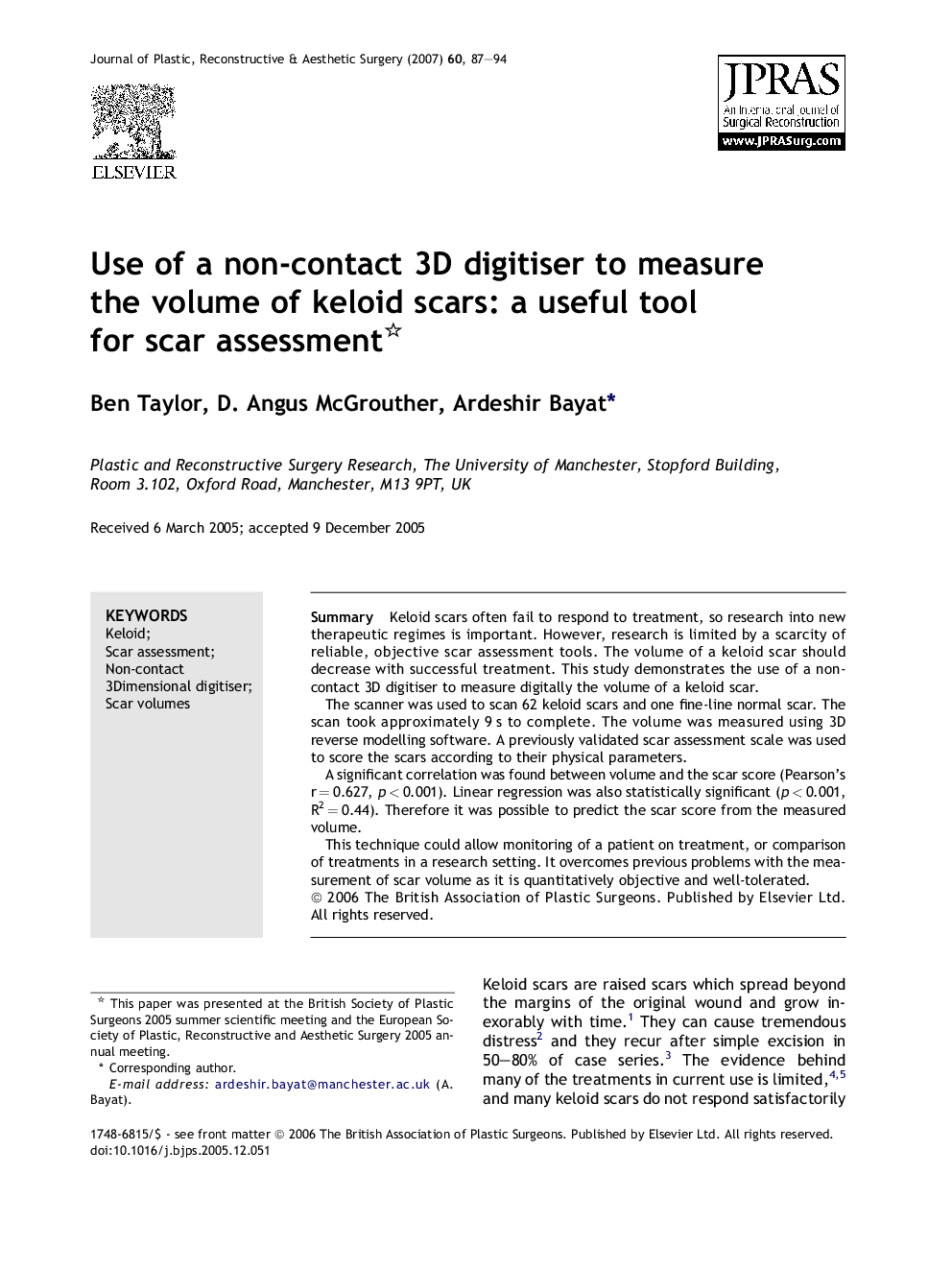| Article ID | Journal | Published Year | Pages | File Type |
|---|---|---|---|---|
| 4121095 | Journal of Plastic, Reconstructive & Aesthetic Surgery | 2007 | 8 Pages |
SummaryKeloid scars often fail to respond to treatment, so research into new therapeutic regimes is important. However, research is limited by a scarcity of reliable, objective scar assessment tools. The volume of a keloid scar should decrease with successful treatment. This study demonstrates the use of a non-contact 3D digitiser to measure digitally the volume of a keloid scar.The scanner was used to scan 62 keloid scars and one fine-line normal scar. The scan took approximately 9 s to complete. The volume was measured using 3D reverse modelling software. A previously validated scar assessment scale was used to score the scars according to their physical parameters.A significant correlation was found between volume and the scar score (Pearson's r = 0.627, p < 0.001). Linear regression was also statistically significant (p < 0.001, R2 = 0.44). Therefore it was possible to predict the scar score from the measured volume.This technique could allow monitoring of a patient on treatment, or comparison of treatments in a research setting. It overcomes previous problems with the measurement of scar volume as it is quantitatively objective and well-tolerated.
